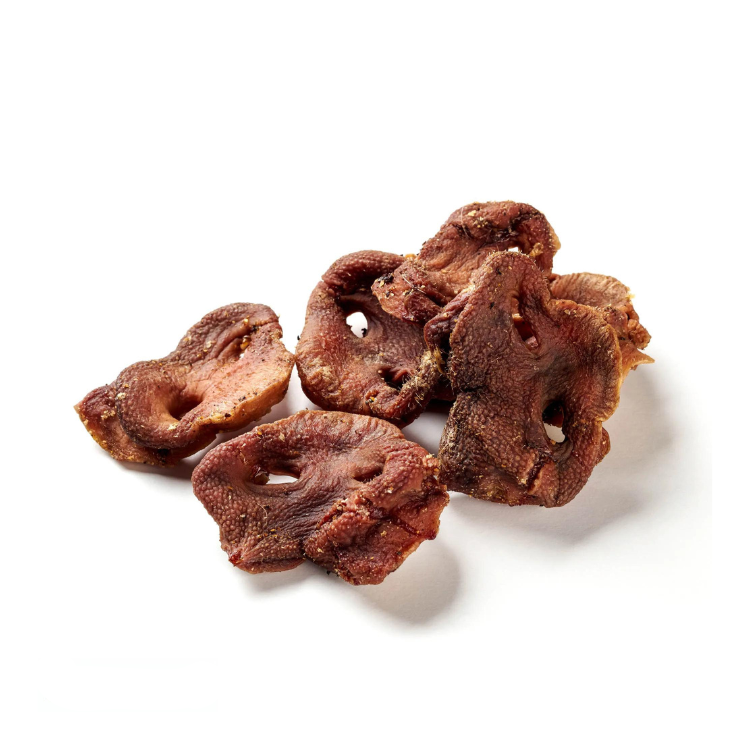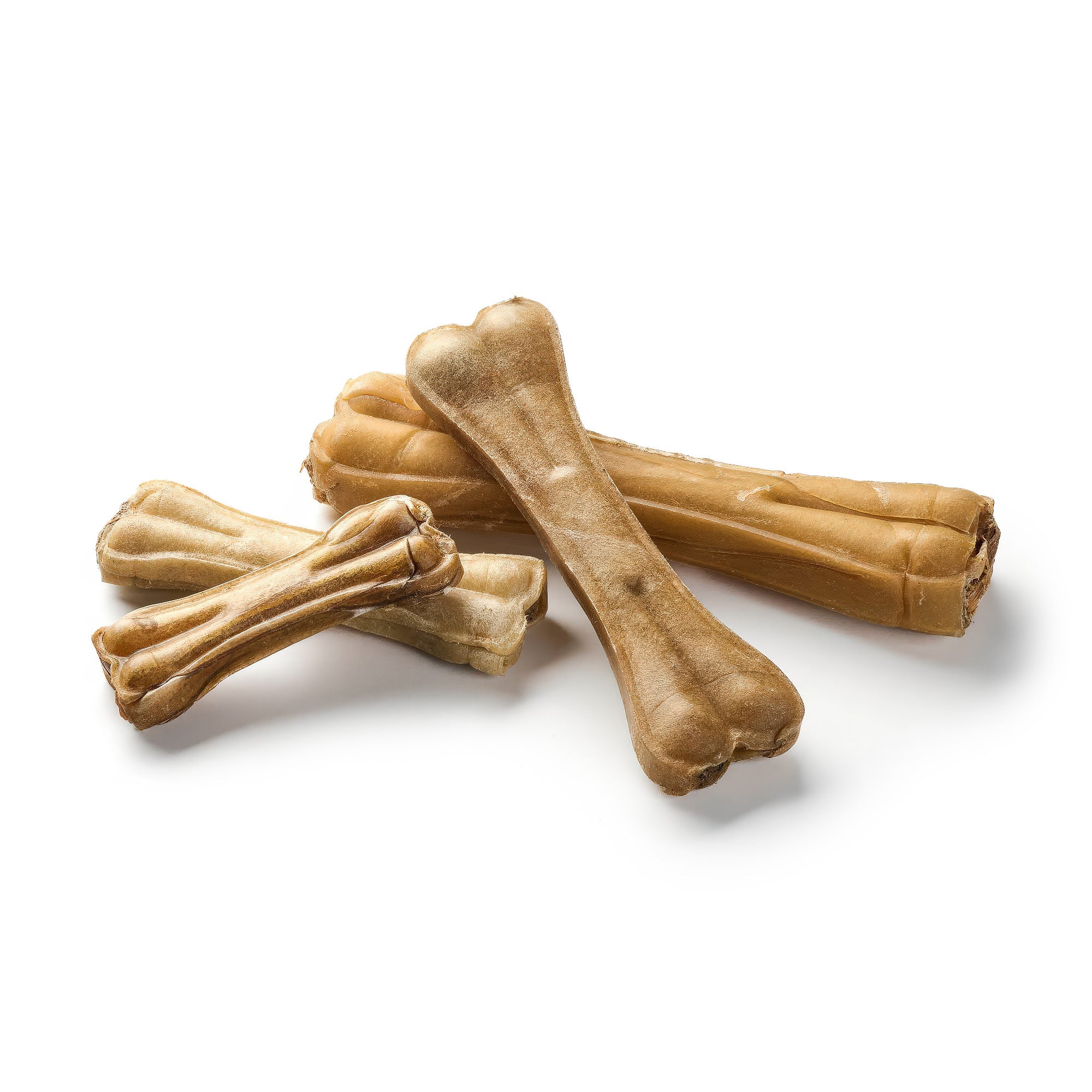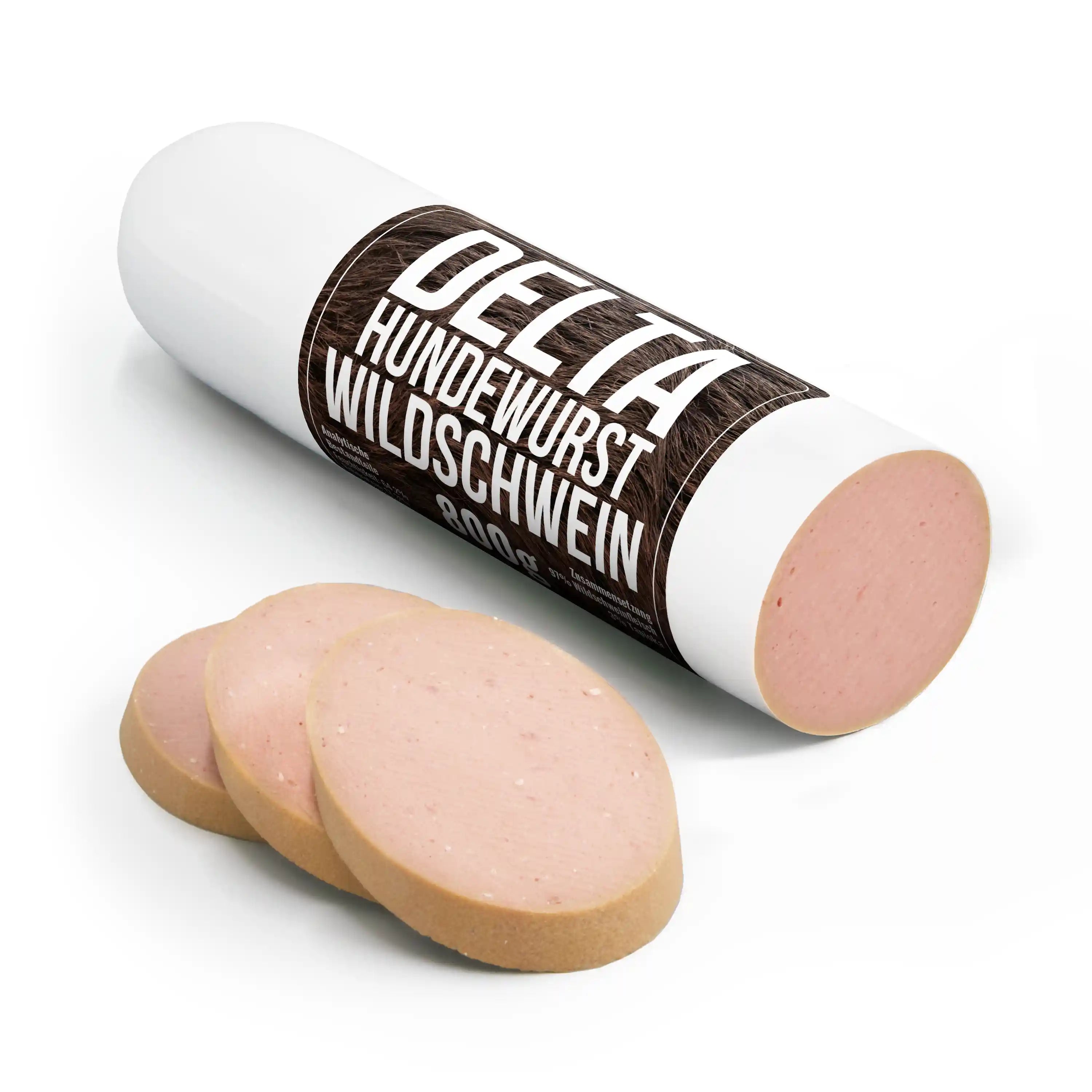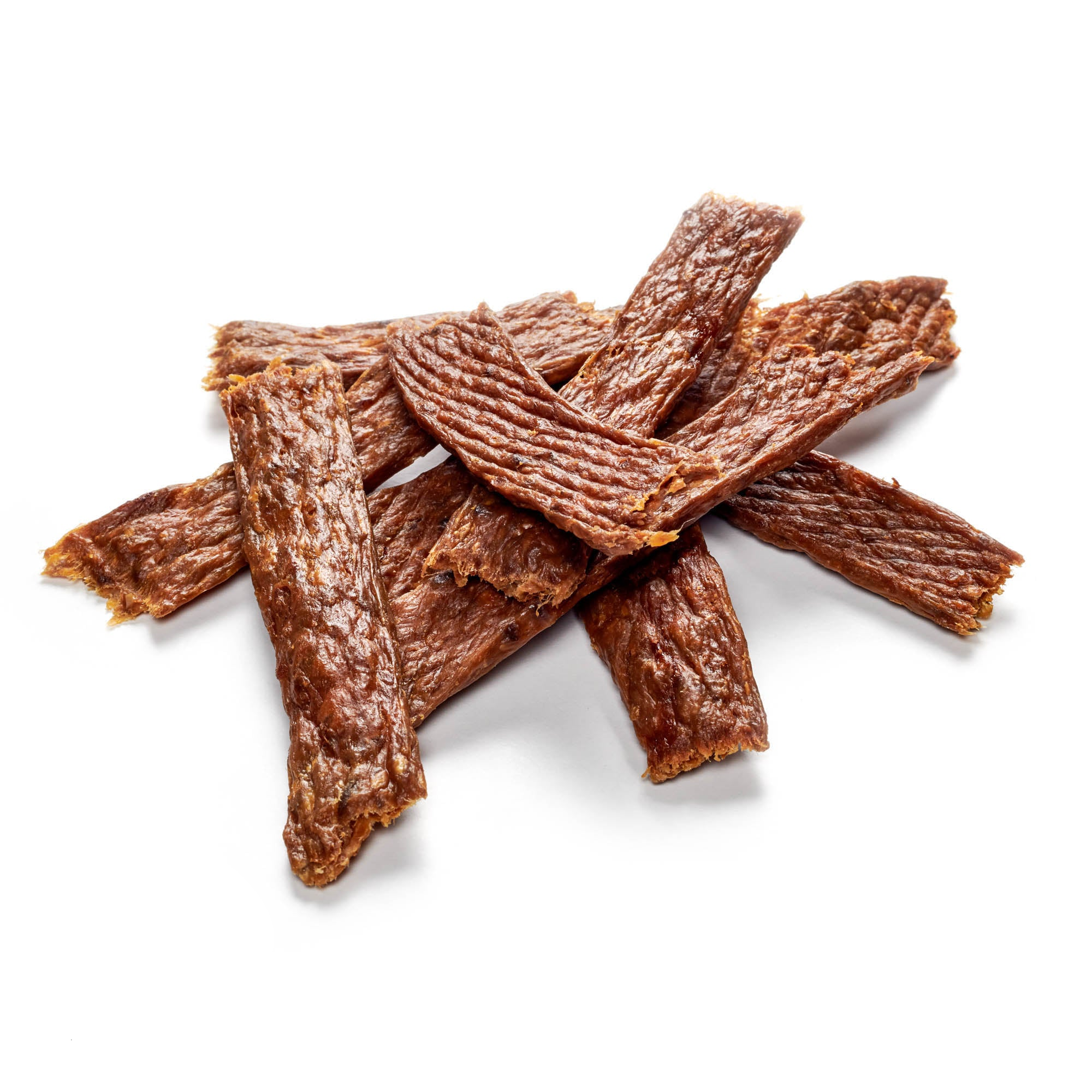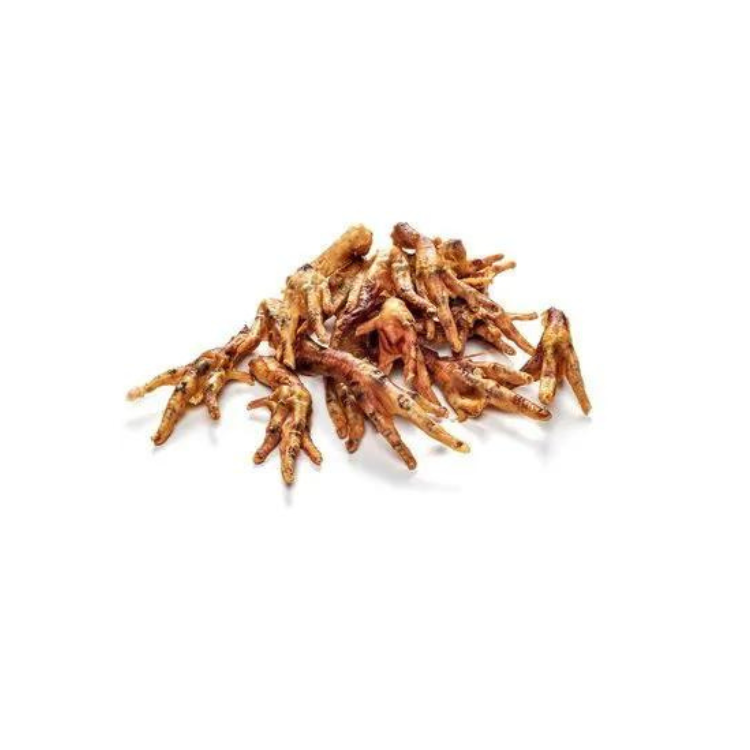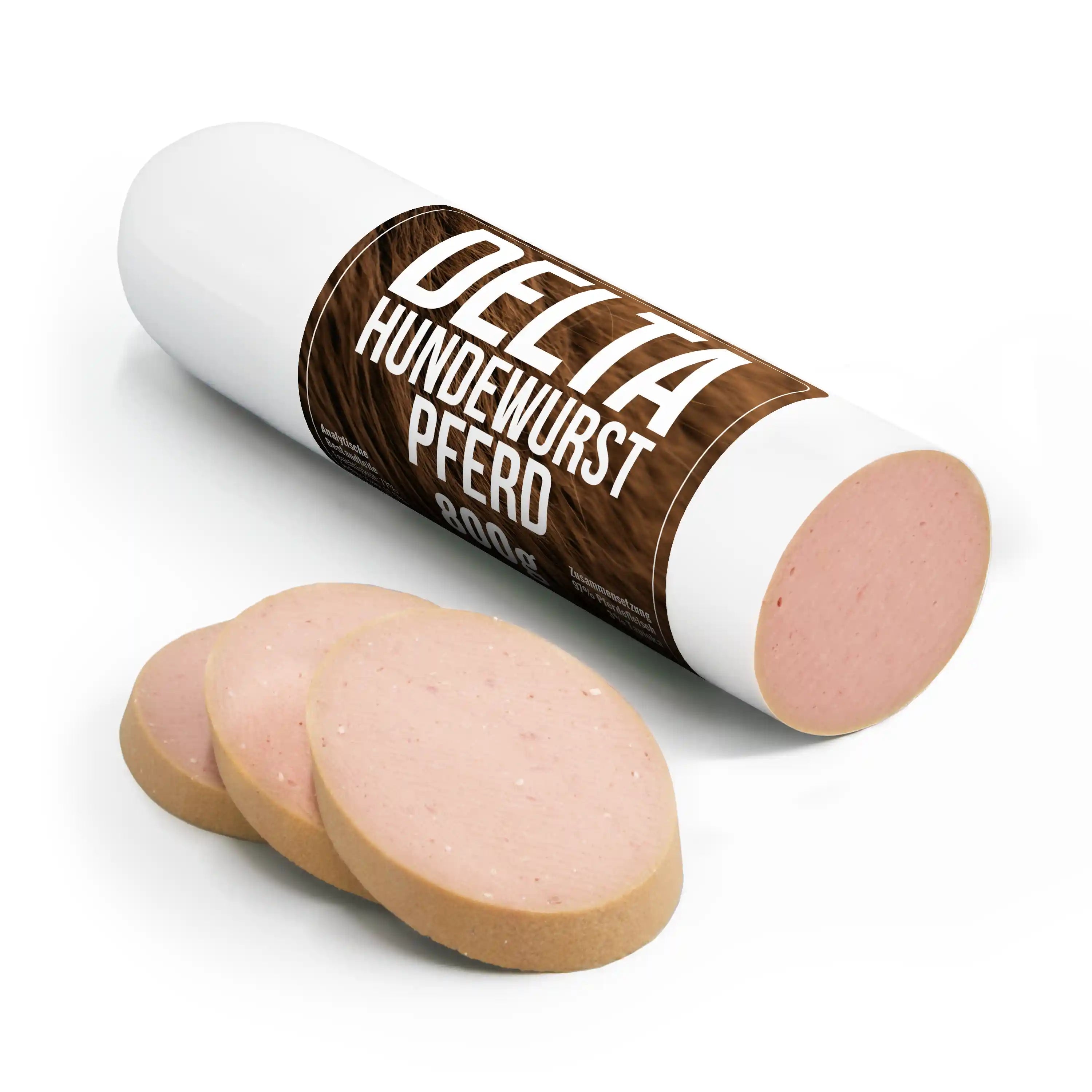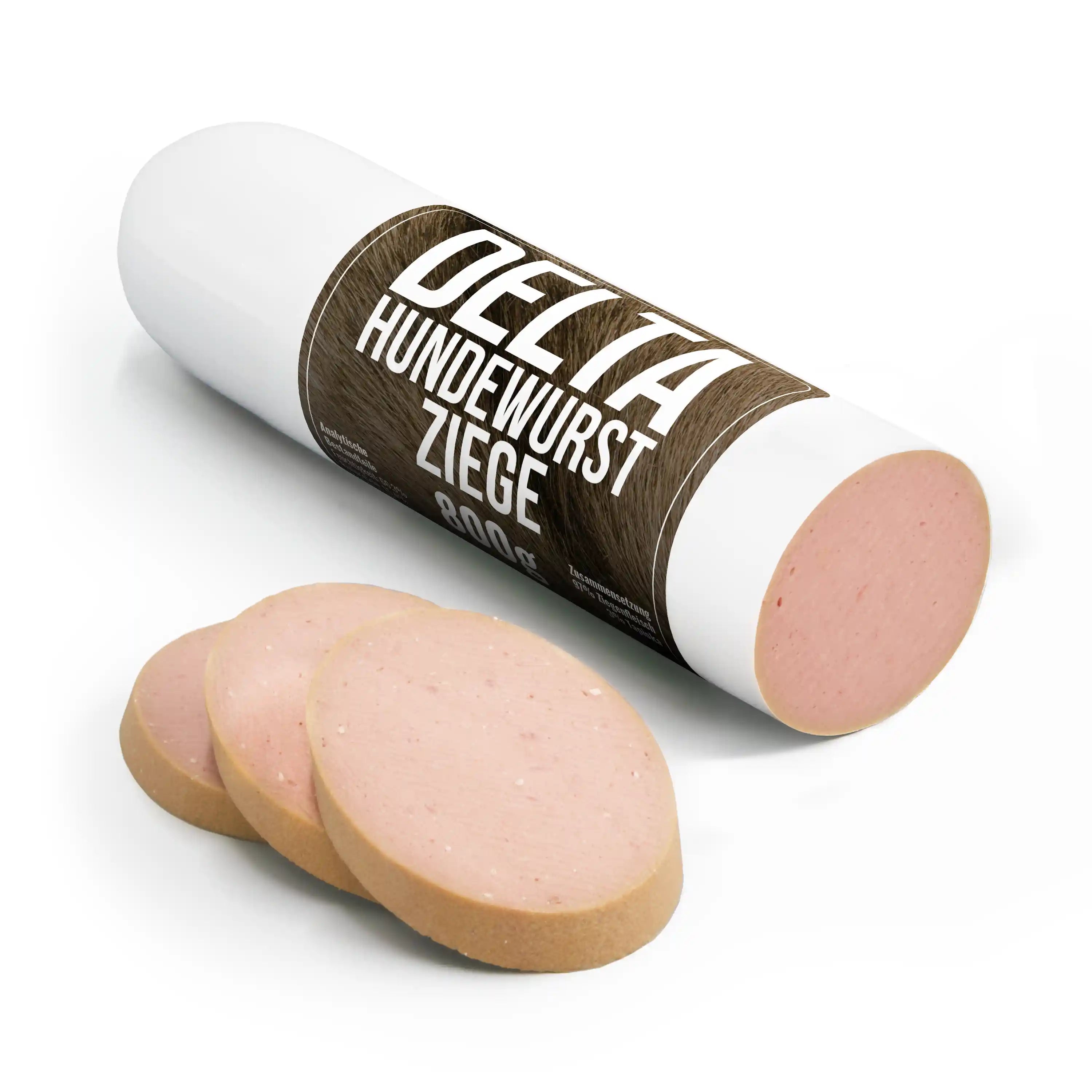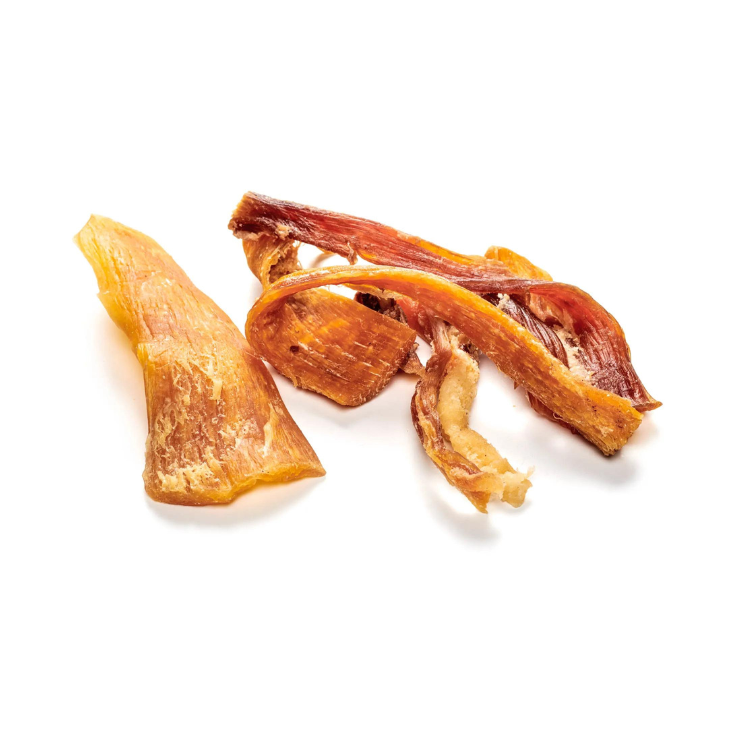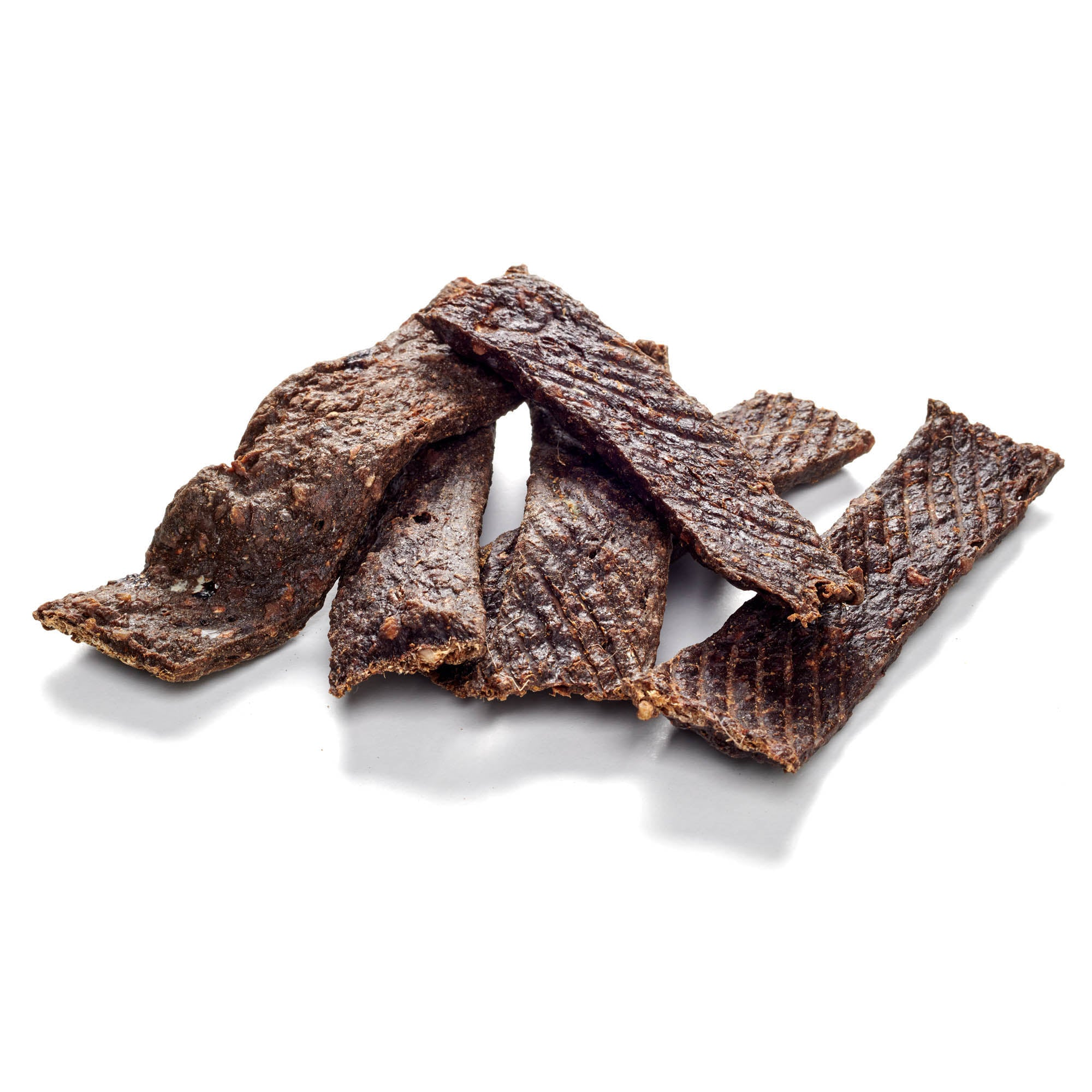
Karelian Bear Dog
Share
The Karelian Bear Dog is an independent and active dog that loves to go hunting with its owner in the forests of Scandinavia. It specializes in tracking moose or bears and roams through the thicket on its own, always looking for a trail. However, the Karelian Bear Dog is not a dog for beginners and should belong in the hands of an experienced hunter.
Content: Karelian Bear Dog
- profile
- Special features
- Nutrition
- Health and care
- Origin and history
- The right accessories
- Conclusion
Pamper your dog with our chew products!
Karelian Bear Dog - Conclusion
- Character: Brave, independent, loyal
- Size: Medium
- Height: 54-60cm
- Weight: 20-23 kg
- Life expectancy: 11-13 years
- Coat type: medium length, dense
- Colour: Black with white markings
- Special features: Finnish hunting breed, strong and independent
- FCI Group: Spitz and primitive dogs
Karelian Bear Dog - Special Characteristics
The Karelian Bear Dog varies in size depending on gender, with females reaching around 52 cm and males reaching around 57 cm. This breed is characterized by its typical spitz type and its robust, powerful build. When viewed from the front, the head appears wedge-shaped, while the bridge of the nose is straight and the stop is only slightly pronounced. Thanks to its black nose, this hunting dog is able to track and follow the subtlest scents. The pointed ears are set high and stand upright, ready to detect even the slightest sound of the game. Despite relatively small but expressive eyes, it observes its surroundings attentively. The powerful muscles on the chest, neck and shoulders are clearly visible. The tail of the Karelian Bear Dog is carried curled over the back, as with many spitz breeds. The breed is mainly recognized by its coat pattern. The animals are usually black with white markings on the neck and chest. The paws and the tip of the tail are also white. A permitted feature is a fine white blaze running from the forehead to the bridge of the nose, as well as a white ring around the neck. It is important that the colors are clearly defined and black spots in the white areas are undesirable.
Karelian Bear Dog - What should be considered regarding nutrition?
For the Karelian Bear Dog, which is constantly on the move and has higher energy requirements than normal family dogs, proper nutrition is of great importance. Special food for performance dogs or supplementary feed can help to meet the increased energy requirements without burdening the dog with excessive amounts of dog food . A balanced diet is essential and fresh water should always be available.
Reward your dog with our high-quality chew products!
Karelian Bear Dog - Health and Care
Caring for your Karelian Bear Dog's short-haired coat is relatively easy. However, during the shedding season, brushing should be done more frequently to remove loose hair from the undercoat. Your Karelian Bear Dog is an extremely active and independent dog. It can be difficult to convince him to stay on your property. Due to his ability to follow tempting scent trails, he can easily jump a 2-meter-high fence . In his native environment in Karelia, it was common for these headstrong dogs to disappear into the forest and only return days later. In Germany, of course, such freedom is not practical. This breed was specifically bred to independently track game over long distances and then signal where the game is by barking. Barking irritates the game and keeps it in place, while signaling to the hunter where the game is. It is important to remember that your dog tends to cover great distances from you during walks. This can be dangerous, especially if he crosses roads without supervision, so it is advisable to keep him on a leash at all times. Due to his innate tendency to bark, the Karelian Bear Dog is an excellent watchdog. He will immediately bark loudly at any stranger or other animal.
Karelian Bear Dog - Origin & History
The origins of the breed can be found in Finland, more precisely in the province of Karelia. The harsh landscape and the harsh climate of this region have shaped the strong and compact physique of these dogs. Village dogs of this type have existed for a long time in the Finnish-Russian border region. These dogs were versatile companions of the people who took them hunting and also used them as guard dogs for their houses and farms. They showed great bravery by tracking down moose and even bears in addition to smaller animals. With their loud barking they kept the prey at bay until the hunter came close and could fire the decisive shot. In addition, these powerful dogs were also used to pull sledges and transport firewood. The roots of the Karelian Bear Dog probably lie on the western side of the Ural Mountains. It descends from dogs that were native to the taiga, the boreal forest region. Many centuries ago, Russian hunters brought these dogs to its current range. The Karelian Bear Dog is closely related to the European Laika dogs . Finnish dog breeders first became aware of this hunting dog breed in the 1920s. The actual systematic breeding began in 1936, and in 1946 the first dog of this breed was registered in the official stud book.
Karelian Bear Dog - The right accessories
The basic equipment for your Karelian Bear Dog includes food and water bowls as well as a comfortable place to rest, be it a blanket or a basket. If your dog spends a lot of time outdoors, a weatherproof hut or shelter is important.
Conclusion
The Karelian Bear Dog is a robust and independent breed that originally comes from Finland. These dogs were bred for hunting and guarding the house and yard and are known for their independence and strong hunting instinct. They are less suitable as pure companion dogs or for life in the city, but need a lot of space and clear leadership. The short coat is easy to care for, but requires special attention during the shedding period.
Pamper your dog with our chew products!

